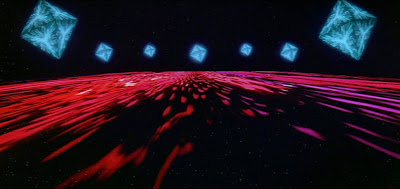If an alien civilization builds brightly-litcities like those shown in this artist's conception, future generations oftelescopes might allow us to detect them. This would offer a new method ofsearching for extraterrestrial intelligence elsewhere in our Galaxy. Photo:David A. Aguilar (CfA).
WASHINGTON, DC.- In the search for extraterrestrial intelligence, astronomershave hunted for radio signals and ultra-short laser pulses. In a new paper, AviLoeb (Harvard-Smithsonian Center for Astrophysics) and Edwin Turner (PrincetonUniversity) suggest a new technique for finding aliens: look for their citylights.
"Looking for alien cities would bea long shot, but wouldn't require extra resources. And if we succeed, it wouldchange our perception of our place in the universe," said Loeb.
As with other SETI methods, they rely on theassumption that aliens would use Earth-like technologies. This is reasonablebecause any intelligent life that evolved in the light from its nearest star islikely to have artificial illumination that switches on during the hours ofdarkness.
How easy would it be to spot a city on a distantplanet? Clearly, this light will have to be distinguished from the glare fromthe parent star. Loeb and Turner suggest looking at the change in light from anexoplanet as it moves around its star.
As the planet orbits, it goes through phasessimilar to those of the Moon. When it's in a dark phase, more artificial lightfrom the night side would be visible from Earth than reflected light from theday side. So the total flux from a planet with city lighting will vary in a waythat is measurably different from a planet that has no artificial lights.
Spotting this tiny signal would require futuregenerations of telescopes. However, the technique could be tested closer tohome, using objects at the edge of our solar system.
Loeb and Turner calculate that today's besttelescopes ought to be able to see the light generated by a Tokyo-sizedmetropolis at the distance of the Kuiper Belt - the region occupied by Pluto,Eris, and thousands of smaller icy bodies. So if there are any cities outthere, we ought to be able to see them now. By looking, astronomers can honethe technique and be ready to apply it when the first Earth-sized worlds arefound around distant stars in our galaxy.
"It's very unlikely that there arealien cities on the edge of our solar system, but the principle of science isto find a method to check," Turner said. "Before Galileo, it wasconventional wisdom that heavier objects fall faster than light objects, but hetested the belief and found they actually fall at the same rate."
As our technology has moved from radio and TVbroadcasts to cable and fiber optics, we have become less detectable to aliens.If the same is true of extraterrestrial civilizations, then artificial lightsmight be the best way to spot them from afar.
Loeb and Turner's work has been submitted to thejournal Astrobiology and is available at arxiv.org.








No comments:
Post a Comment